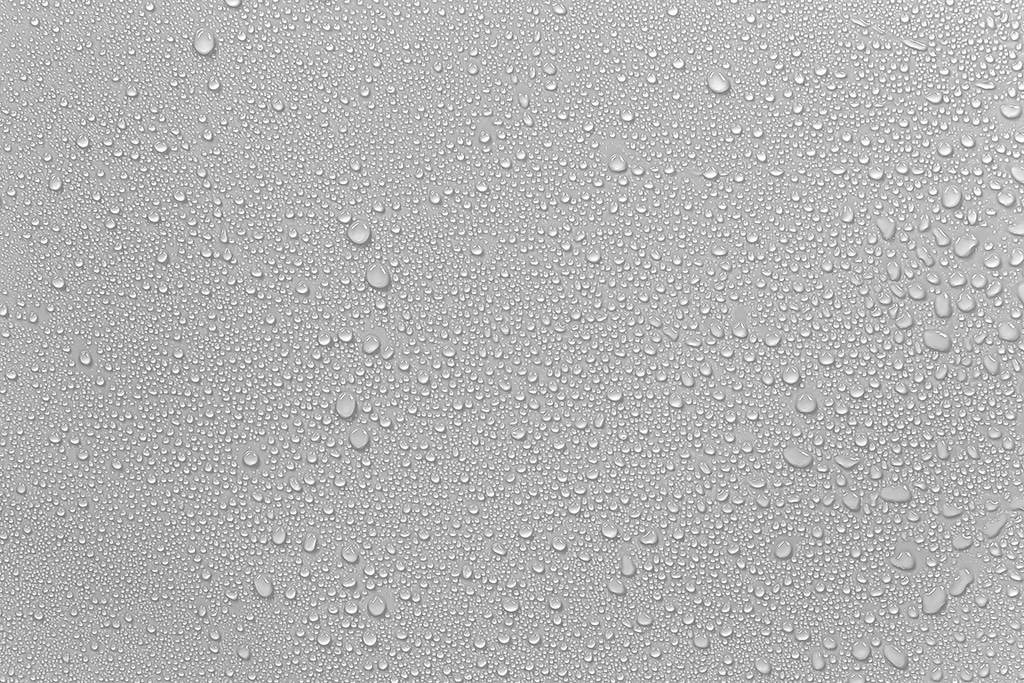
Resolve The Excessive Condensation On Your Air Ducts And Vents With Professional Heating And AC Repair | Dallas, TX
Condensation is one of the dreaded issues that affect air conditioners. Though it might not seem a serious issue, its results certainly are. Knowing the ways of stopping condensation on your air ducts is critical. Otherwise, the condensate might cause serious damage to some HVAC parts if left unaddressed, prompting a heating and AC repair. Though it might sound terrible, it doesn’t necessarily mean that your HVAC unit is approaching the end of its service life.
When the air conditioner is cooling the air, condensate is produced. That is normal. However, too much condensate might signal that you will soon call a heating and AC repair technician in Dallas, TX. The sweating of air ducts is another issue that some homeowners experience, although it is pretty easy to fix. Before addressing ways of stopping condensation on your air ducts, let’s first look at ductwork sweating and its causes.
Air Conditioner Ductwork
An air conditioner’s ductwork is a collection or network of air ducts that distribute conditioned air from an HVAC system into various parts of your home. The air duct network transfers air from air vents to the main heating or cooling unit and back. The air ducts can be made from various materials such as fiberboard, fiberglass, and sheet metal. Hence, it is critical to know what your air ducts are made from because it impacts whether you should be concerned about ductwork sweating. You can have them checked by a heating and AC repair technician.
In older homes, you are likely to find metallic air ducts. The other type of air duct is the flexible duct. They comprise plastic tubes that are reinforced with insulation and wire. Unfortunately, ductwork sweating is more likely to happen on the metallic ductwork, especially if it isn’t insulated adequately. But what is condensation?
What Is Condensation in the Air Ducts?
It is summer, and you have just reached out for a can of cold beer from your refrigerator. Upon taking it out, you notice that there are water droplets that have started forming on the metal can. Condensation refers to the process by which water vapor changes into a liquid. The cold air can’t hold much moisture compared to warm air.
Whenever the moisture-filled warm air meets the cold metal can, it will cool down. As a result, the humidity in the air will also condense, forming water droplets. Condensation is reverse evaporation. A similar process causes condensation on your air ducts too. The AC ductwork becomes cold because of the cool air passing through.
So, naturally, when warm air surrounding the air ducts gets into contact with the cooler ducts, the ductworks might experience a lot of sweating. Hence, you are advised to have a regular HVAC maintenance heating and AC repair technician. They can notice the excessive sweating and take measures to avert it. Although condensation is among the most reason for ductwork sweating, it is not the only culprit. Besides, there are many other reasons why the air ducts might be sweating.
Negative Effects of Air Duct Condensation
Should sweating air ducts worry you? What are some of the impacts of sweaty ductworks? Although minor ductwork sweating might not result in extensive damage, if you have noticed a lot of condensation in the air ducts, that should be something to concern you. There are various ways that condensation might result in you calling a heating and AC repair technician in Dallas, TX. Below are some of the reasons to be worried:
Damages the Insulation
When there is condensation in the air ducts, the condensate will eventually flow down onto the insulation you’ve installed at home. The water drips will have several impacts on the insulation, including compressing the insulation, affecting its R-value, and lowering its efficiency with time. The heating and cooling energy cost will skyrocket without proper insulation. Therefore, have a heating and AC repair technician address the condensation issue on the air ducts to ensure you aren’t hit with high energy utility bills. When the insulation material becomes damp, it will have a higher weight. This might lead to ceiling leaks or even a subsequent collapse.
It Adds to High Indoor Humidity
High humidity could harm you, your family, and your home. The sweating ductworks add excessive moisture to your home, lessening the comfortability. High indoor humidity damages your wood flooring, paints, and wallpapers, resulting in foul orders. It means that you will incur huge repair and restoration costs. Breathing air of poor quality can also take a toll on your health. Hence, whenever you notice that the air ducts are sweating a lot, have a heating and AC repair technician in Dallas, TX, come over for a further inspection and repairs. Routine maintenance is the best way of ensuring that such an issue doesn’t happen to you.
Mold and Mildew Growth
Mildew and mold grow and thrives in dark, moist, and warm areas. An excessive moisture level in your indoor space caused by a condensation of the air ducts provides an ideal condition for mold growth. This is another problem you don’t want to deal with. Mold could damage your home’s structural components because they eat on everything they grow. Further, mold harms your indoor air quality.
The mold spores rapidly spread through our various rooms at your home when you turn on the HVAC system. Mold has been known for causing various respiratory complications such as sneezing, wheezing, coughing, and even exacerbating the conditions of those having pre-existing breathing issues like asthma. Never try clearing mold on your own. Rather, have a heating and AC repair technician clean it using an antimicrobial fogger.
Water Damage to Various Structural Elements
Wood and water do not go well together. Most of the houses in the US are wood framed. Hence, if the air ducts are sweating, the water might find its way into the structural elements of your home, resulting in corrosion and decay. To avert such deterioration of some of your home’s structures, have a heating and AC repair technician in Dallas, TX, address the condensation issue. Besides losing the thermal capacity, your home might also suffer structural damage from the extensive condensate leak.
Causes of Air Duct Condensation
HVAC Unit Mechanical Problems
Have you noticed excessive sweating on your air ducts? Call a heating and AC repair technician for a general inspection. It could be that the HVAC system has technical problems. For instance, the HVAC system might be producing strange noises, throwing a foul smell, leaking ducts, and weak airflow. Any problem with any part of the unit might make it improperly function, resulting in a buildup of condensate on the air ducts.
Poor Insulation
The temperature difference between the warm air outside and the cooler air within is the main reason for condensation on the air conditioner’s ductwork. Insulating the air ducts might cause this problem since it creates a barrier surrounding the ductworks, keeping the warm air away. However, even with a layer of insulation around the air ducts, it may be inadequate or even wear out with time. The worn-out insulation could make the condensation even much worse. Hence, if you don’t have enough insulation or the layer has deteriorated, have a heating and AC repair technician apply a new layer.
Excessive Air Moisture
Excess moisture in the air is the other reason for the ductwork sweating. If there is more moisture in the air, then more of it will collect on the ductwork. Ideally, indoor humidity levels should be around 40% and 60%. Maintaining a perfect humidity level is critical to preventing the sweating of the air ducts and for your comfort and health. Damp basements, drying the clothing indoors, plumbing leaks, and poor ventilation are some of the things that could result in excessive moisture in the air. Although there isn’t much that a heating and AC repair technician can do to avert this, they can advise you to install a dehumidifier to address the humidity issue.
Blocked Ducts and Dirty Air Filters
Sweating air ducts can signal insufficient flow of air in your ductworks. The air ducts might have a blockage, the AC filters might be clogged, or your unit’s MERV rating on the filter might be too high. Have a heating and AC repair technician in Dallas, TX, replace the air filters every few months to ensure they aren’t clogged. This will ensure a strong airflow and prevent clogging.
Leaky Air Ducts
The leaking air ducts impact the performance of your air conditioner and result in the condensation of the ductworks. The air ducts have pipes that are sealed and connected. The seals wear out with time, giving way to leaks. Although the pipes have a layer of insulation around them, their performance might take a toll because of the cold air leaking into that insulation layer. When the heating and AC repair technician comes for maintenance, air duct leaks are some of the issues they check. Hence, routine servicing of the air conditioner is essential.
Improper Installation
The other reason the air ducts might be sweating is if they are not installed properly or touching at some point. Whenever the air ducts touch each other, they will create cold spots, and condensation might arise at that spot. A proper installation is essential during ductwork installation on the attic because the performance of the insulation may be affected by the installation. Hence, hire licensed and professional heating and AC repair technician in Dallas, TX, for any HVAC installation.
Stopping Ductwork Condensation
To Reduce the Levels of Humidity
You can address the ductwork condensation by lowering the humidity levels at your home. Do you live in a place that naturally has high humidity? You should hire a heating and AC repair professional to install a dehumidifier and connect it to a smart HVAC controller. This will automate it and help maintain the moisture levels at your home at comfortably safe levels.
Maintaining the Ducts Properly
Like Air Filters, the air ducts might also become clogged with pet dander, debris, dust, or dead insects. If the air ducts are blocked, then there will be a reduced airflow that could cause air duct condensation. Although you could replace the air filters, you cannot maintain or repair the air ducts yourself. You are always advised to hire a reliable and licensed heating and AC repair technician in Dallas, TX. They have special tools and equipment required for the task.
Insulating the Metallic Ducts
By default, flexible air ducts have insulation around them. Hence, you don’t have to worry about insulation. The heating and AC repair technician should hand seal any exposed connections to prevent sweating. However, if your ductworks are the older metallic version, you’ll have to insulate them. A professional can help you apply the insulation layer on the air ducts during a maintenance visit.
Keeping the Air Filter Clean
You can considerably reduce energy costs by using a clean HVAC filter. However, that is not the only benefit. If the air filters are dirty, they restrict the airflow. This might affect the dehumidifying and cooling abilities of your air conditioner. As a result, your home will have high humidity that can cause the condensation of the air ducts. Based on the air filters you use and the weather conditions in your vicinity, you might have to replace the filters as frequently as per month.
Your Reputable Heating and Air Conditioning Repair Company
Have you noticed a lot of condensation on your air ducts? That might be caused by any of the issues above and has several impacts. However, there are several things that you can do to prevent the accumulation of this moisture. Although some of them are caused by nature, your heating and AC repair technician can use their experience to resolve the issue. If you notice condensation of the air ducts, reach out to us at One Hour Air Conditioning & Heating of Dallas today.






